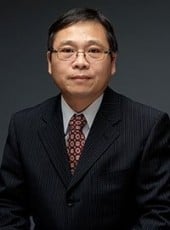
Haiying Liu has been awarded a supplementary grant of $18,995 from the National Institutes of Health. The grant supplements Liu’s parent grant related to the project titled “Near-infrared Fluorescent Probes for Sensitive Detection of NADH in Live Cells,” bringing the total accumulated funding to $488,495.
Rudy Luck is a co-PI on this potential three-year project.

This supplemental grant will enable the acquisition of a cell incubator equipped with precise oxygen level control. Controlling oxygen levels offers significant advantages for studying NAD(P)H levels in live cells during drug treatment, including enhanced accuracy, reproducibility and the ability to mimic specific physiological conditions.
The research goals of this project involve the design and development of near-infrared fluorescent probes, facilitating accurate and quantitative analysis of alterations in NAD(P)H concentrations within the mitochondria of live cells, specifically within the glycolysis pathway. This comprehensive analysis will encompass diverse metabolic processes and the variations occurring during mitophagy induced by cell starvation and drug treatment. The overarching objective is to attain a more profound understanding of both physiological and pathological processes.
About the Chemistry Department
Chemists at Michigan Technological University help students apply academic concepts to real-world issues and advance research making contributions to health and well-being, environmental protection, responsible use of materials, and climate stabilization. The Chemistry Department offers five undergraduate degrees and a master’s and PhD in chemistry. Supercharge your chemistry skills to meet the demands of a technology-driven society at a flagship public research university powered by science, technology, engineering, and math. Graduate with the theoretical knowledge and practical experience needed to solve real-world problems and succeed in academia, research, and tomorrow’s high-tech business landscape.
Questions? Contact us at chemistry@mtu.edu.